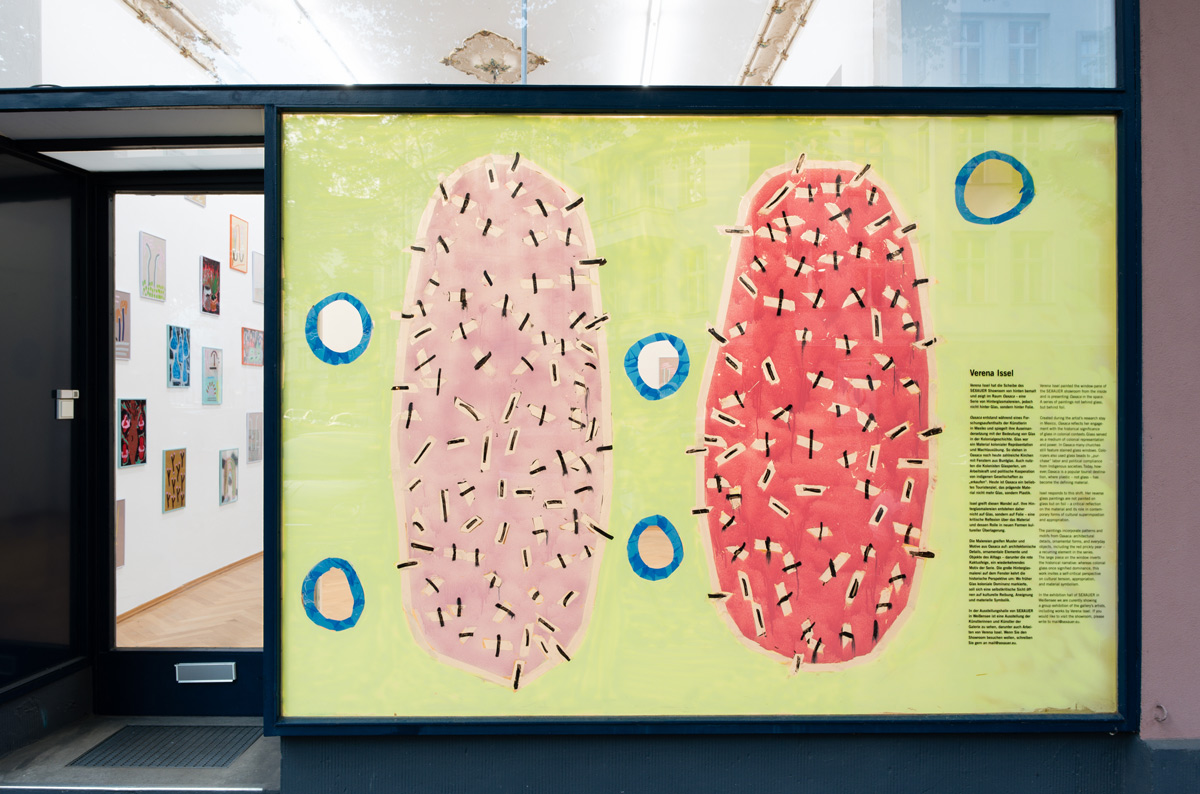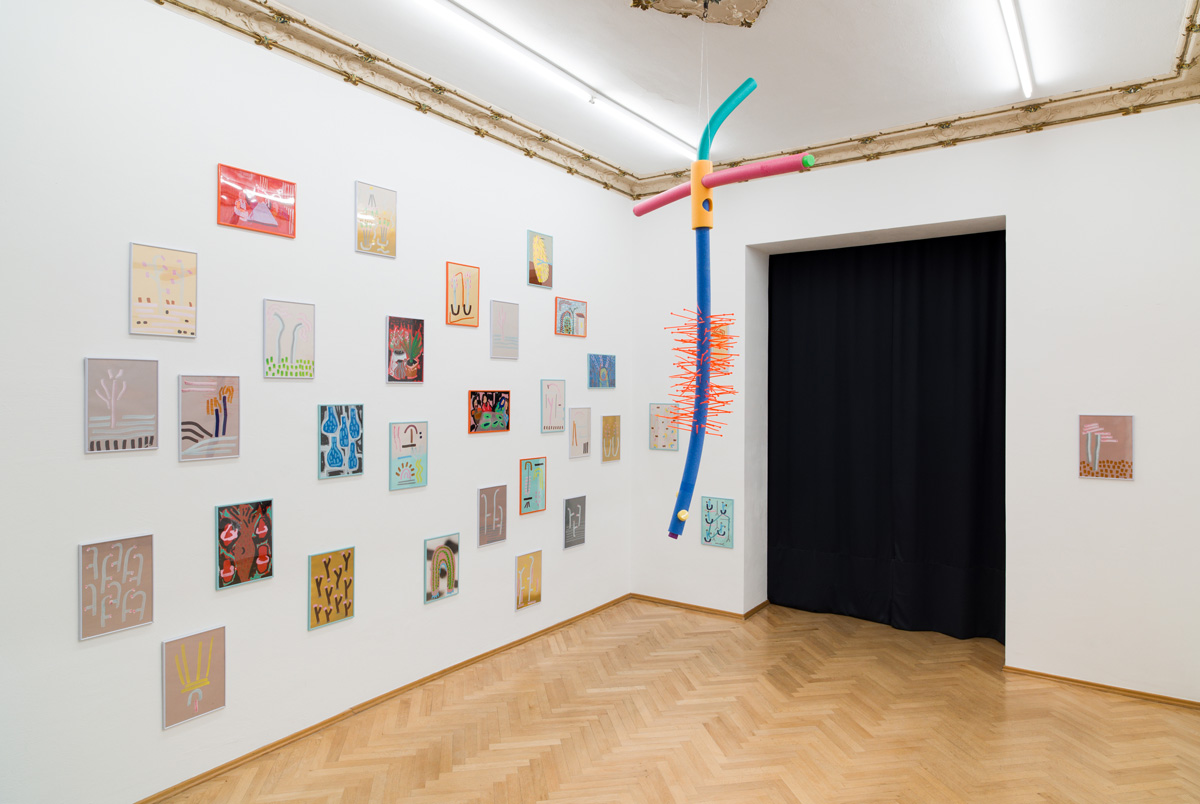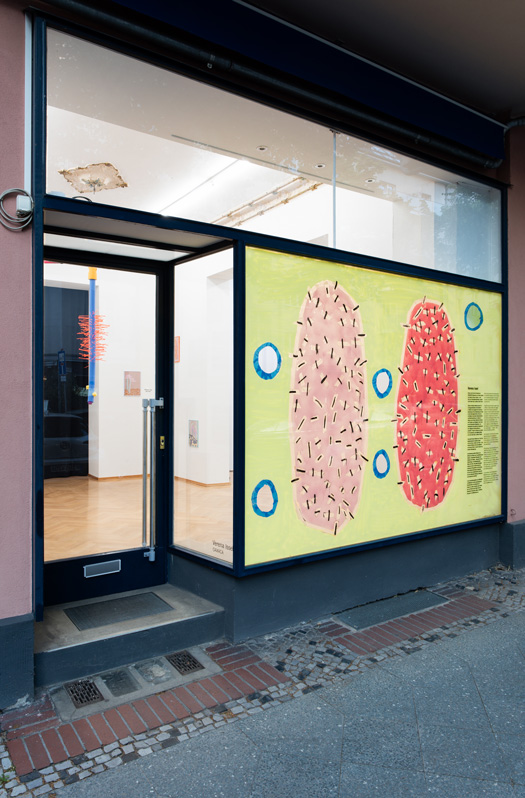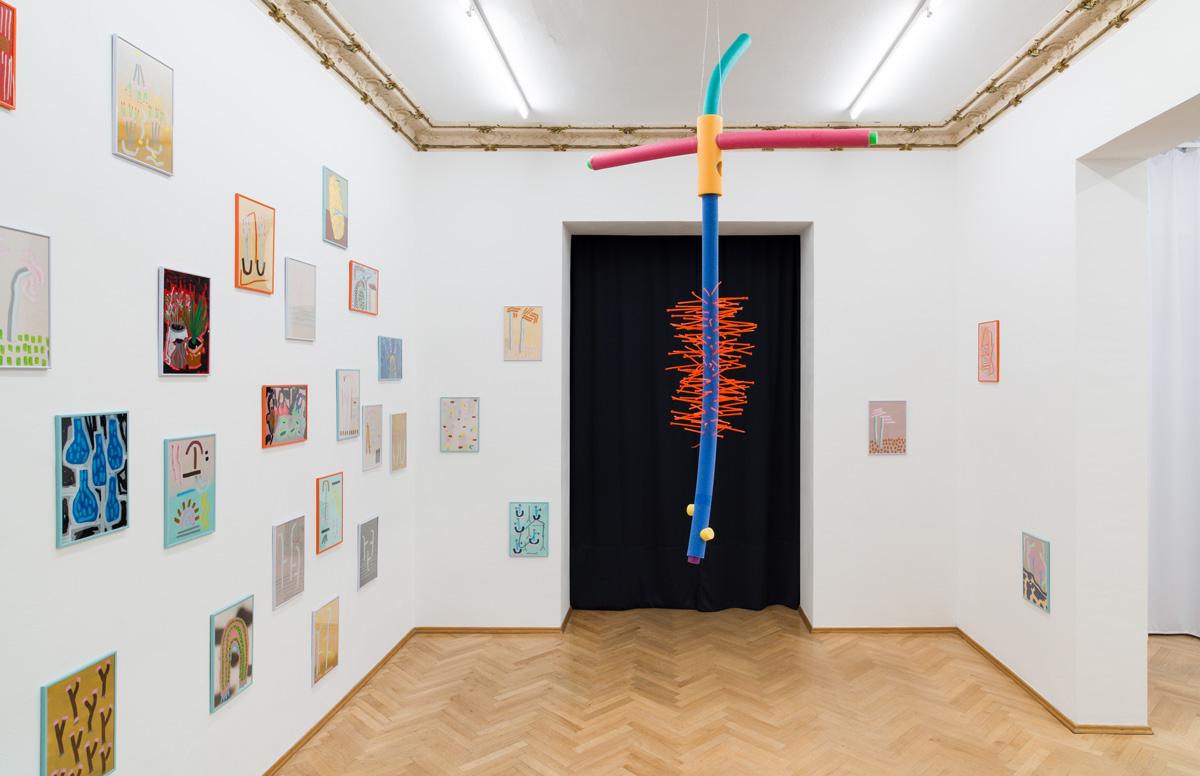



(english version below)
VERENA ISSEL
Verena Issel hat die Scheibe des SEXAUER Showroom von hinten bemalt und zeigt im Raum Oaxaca – eine Serie von Hinterglasmalereien, jedoch nicht hinter Glas, sondern hinter Folie.
Oaxaca entstand während eines Forschungsaufenthalts der Künstlerin in Mexiko und spiegelt ihre Auseinandersetzung mit der Bedeutung von Glas in der Kolonialgeschichte. Glas war ein Material kolonialer Repräsentation und Machtausübung. So stehen in Oaxaca noch heute zahlreiche Kirchen mit Fenstern aus Buntglas. Auch nutzten die Kolonisten Glasperlen, um Arbeitskraft und politische Kooperation von indigenen Gesellschaften zu „erkaufen“. Heute ist Oaxaca ein beliebtes Touristenziel, das prägende Material nicht mehr Glas, sondern Plastik.
Issel greift diesen Wandel auf. Ihre Hinterglasmalereien entstehen daher nicht auf Glas, sondern auf Folie – eine kritische Reflexion über das Material und dessen Rolle in neuen Formen kultureller Überlagerung.
Die Malereien greifen Muster und Motive aus Oaxaca auf: architektonische Details, ornamentale Elemente und Objekte des Alltags – darunter die rote Kaktusfeige, ein wiederkehrendes Motiv der Serie. Die große Hinterglasmalerei auf dem Fenster kehrt die historische Perspektive um: Wo früher Glas koloniale Dominanz markierte, soll sich eine selbstkritische Sicht öffnen auf kulturelle Reibung, Aneignung und materielle Symbolik.
VERENA ISSEL
Verena Issel painted the window-pane of the SEXAUER showroom from the inside and is presenting Oaxaca in the space. A series of paintings not behind glass, but behind foil.
Created during the artist’s research stay in Mexico, Oaxaca reflects her engagement with the historical significance of glass in colonial contexts. Glass served as a medium of colonial representation and power. In Oaxaca many churches still feature stained glass windows. Colonizers also used glass beads to „purchase“ labor and political compliance from Indigenous societies. Today, however, Oaxaca is a popular tourist destination, where plastic – not glass – has become the defining material.
Issel responds to this shift. Her reverse glass paintings are not painted on glass but on foil – a critical reflection on the material and its role in contemporary forms of cultural superimpostion and appropriation.
The paintings incorporate patterns and motifs from Oaxaca: architectural details, ornamental forms, and everyday objects, including the red prickly pear – a recurring element in the series. The large piece on the window inverts the historical narrative: whereas colonial glass once signified dominance, this work invites a self-critical perspective on cultural tension, appropriation, and material symbolism.

